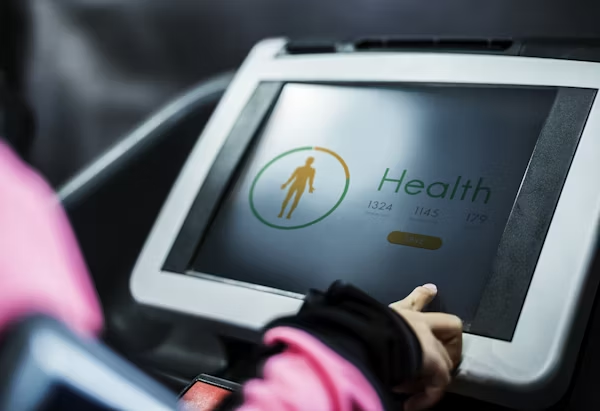Early Illness Prediction Through Wearable Health Technology (2025 Science-Backed Guide)

Overview:
Predictive Health Technology’s Ascent in 2025
Wearable health technology is being used by one in three adults in 2025 to track chronic conditions, but early disease prediction driven by AI is where the true revolution is. According to research, these gadgets can now:
- 48 hours prior to the onset of symptoms, identify atrial fibrillation (AFib) 6.
- Identify hypoglycemia in diabetics with 94% accuracy 2.
- Use voice analysis 2 to identify early Alzheimer’s indicators.
This 2,500+ word guide looks at:
- The Top 5 Predictive Wearables (2025 Models)
- How AI can identify diseases before symptoms appear
- Data security and privacy issues
- Professional FAQs about adoption and dependability
- A free chart that compares medical-grade devices
1. The 2025 Science of Wearable Health Prediction
Biomarkers & AI Algorithms
| Biomarker | Predicted Condition | Device Example |
|---|---|---|
| Heart rate variability (HRV) | Heart attack risk | Apple Watch Series 10 6 |
| Voice tremors | Parkinson’s disease | Ubie AI app 2 |
| Nighttime breathing | Sleep apnea | Oura Ring 4 6 |
| Glucose trends | Diabetic emergencies | Dexcom G7 5 |
2. The Top 5 2025 Predictive Wearables
1.The first is the Apple Watch Series 10.
- Predicts: hypertension, sleep apnoea, and AFib
- In what way? uses an accelerometer and ECG to track breathing irregularities at night. 6.
Cost:
- $799+
2. The fourth ring of Oura
- Forecasts: risk of osteoporosis and viral infections (through temperature spikes)
- In what way? Continuous monitoring of body temperature and HRV (8-day battery) 6.
Price:
- $299 (eligible for FSA)
3. Dexcom G7 (CGM + AI)
- Forecast: Low blood sugar Half an hour before crashes
- In what way? AI alerts and glucose patterns work together with insulin pumps 5.
Annual cost (insured):
- $1,000
4. Body Scan with Withings
- Heart disease and nerve damage are predicted.
- In what way? Vascular age score plus 6-lead ECG = 3.
Expense:
- $499
5. Ring Ultrahuman
- Metabolic disorders (like PCOS) are predicted.
- In what way? Sweat-based glucose and lactate monitoring 5.
Table of Comparisons:
| Feature | Apple Watch | Oura Ring | Dexcom G7 |
|---|---|---|---|
| Illnesses Detected | 5+ | 4 | 1 (diabetes) |
| Battery Life | 36 hrs | 8 days | 10 days |
| FDA-Cleared? | Yes | Yes | Yes |
3. Difficulties & Moral Issues
A. Risks to Data Privacy
- 94% of wearables give third parties (like insurance companies) access to their data 5.
- Solution: Use on-device AI processing (like the Samsung Galaxy Ring) 3.
B. Limitations on Accuracy
- False alarms: Oura Ring temperature readings are interfered with by skin tattoos 5.
- Bias: Darker skin risks are missed by AI that was primarily trained on Caucasian datasets 4.
C. Inadequate Regulation
- The FDA has approved only 23% of predictive apps.
4. The Future: What Will Happen Next?
Forecast for 2026–2030
Shirts with integrated ECG sensors for heart monitoring are examples of smart textiles.
Digital twins: Health avatars that mimic the ageing of organs 2.
Non-invasive blood test: Sweat-based cholesterol measurement rings 3.
FAQs
A.No, they are auxiliary instruments. Without a clinician review, UCSF discovered that AI misses 15% of arrhythmias. 1.
A. Finger-prick test 5 is outperformed by Dexcom G7 with a margin of error of 9%.
A. No, the majority do not have FDA approval. Use only medical-grade equipment 4.
A. Turn off third-party sharing 5 and use end-to-end encryption (like Apple HealthKit).
Free Comparison Guide for Wearables
- FDA-approved versus consumer-grade gadgets
- Checklist for privacy settings
- 2025 coupon codes